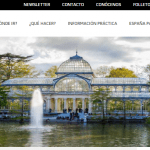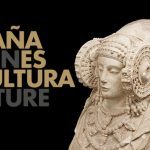Experts that met at the UIMP summer course in Santander organised by Santander City Council and SEGITTUR all agree that the smart destination method will improve the management of destinations, as it analyses tourism activity transversally and offers a roadmap with actions aimed at offering more satisfactory tourism and more efficient management.
This methodology allows the destinations to be measured better, for their evaluation to be collaborative, with an approach of continuous improvement and evolution of the main objective, which is none other than to improve the governance of a destination with a 360-degree vision based on innovation and technology.
Experts feel that advancing towards a Smart Destination model is necessary for diverse factors, including the digital transformation of the tourism sector, where destinations are facing challenges such as the pressure of tourism on the territory, the need to develop sustainable tourism, seasonality, digitalisation and new traveller needs.
During the course analyses were carried out of each of the fundamental axes of the Smart Destination model, from governance to accessibility, as well as innovation, sustainability and technology, with the destinations having detected common problems in all of them, including the constraints of the management body, the lack of innovation strategy and budget, limited connectivity, insufficient energy management measures, as well as a shortage of accessible tourist services.
The core area that obtained the best score in the diagnostic reports conducted by SEGITTUR with the Smart Destination methodology was sustainability, with 64.5%, followed by governance (50.9%), accessibility (46.6%), innovation (46.3%) and technology (45.2%).
The methodology has already been applied in more than fifty destinations, where the best practices for smart destinations have been identified, which include tourism intelligence and data analysis in order to adapt the supply to suit tourism demand, the use of technology to improve the tourist experience, innovative tourism products, and accessible resources with ramps and Braille signage.
The destinations of Santander, Palma and Salamanca all shared their experiences as smart destinations. All of them underlined the need for and the importance of public-private collaboration.
In this regard, Palma’s tourism councillor, Elena Navarro, noted that participation and involvement with the sector is essential as they are part of the essence of the destination.
For her part, Santander’s councillor for tourism, Miriam Díaz, recognised the benefits of the model without forgetting the effort and time it demands. In her opinion, it is essential that the entire management body is aware of the management change entailed, while involving the team and setting up a technical office.





